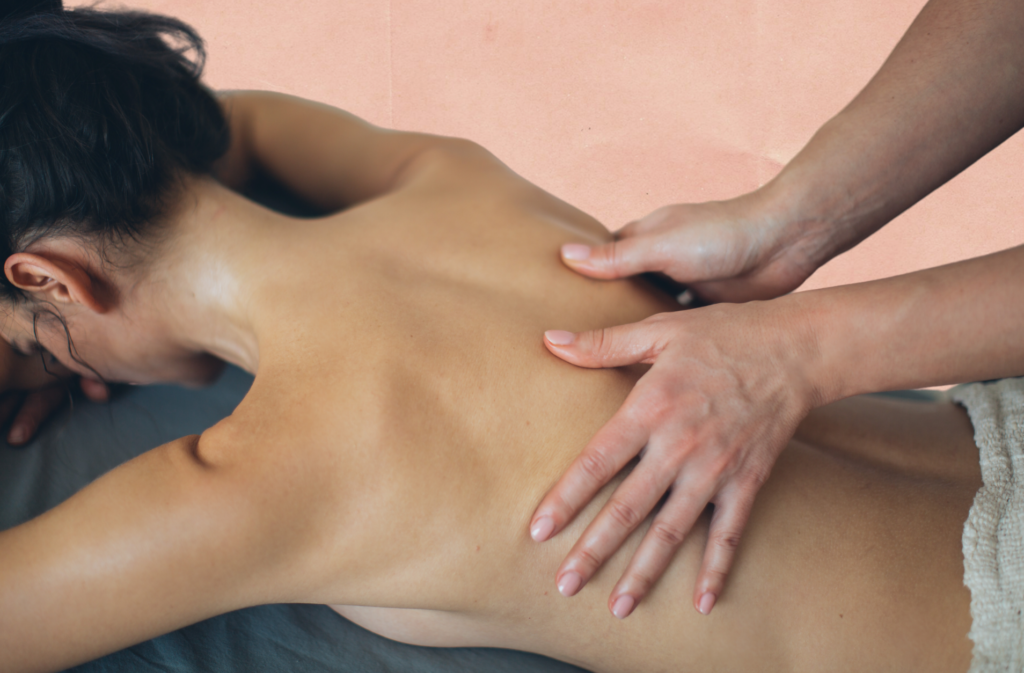According to Mayo Clinic, massage is one of the most powerful weapons in the alleviation arsenal for promoting health and wellbeing, and for addressing back pain. But you didn’t need an online doctor’s surgery named after a delicious oil and egg emulsification to tell you that, did you? Yep, when used as a part of complementary and integrative medicine, the results have the potential to be miraculous. With that in mind, here are 7 types of massage designed to address back pain.
Swedish Massage Therapy
While the physical benefits of massage are manifest, one of the most significant advantages actually resides in the mind. Indeed, destressing and decompressing from the daily grind could be massage’s ultimate trump card in these hectic, highly-strung days of hustle, bustle and bluster.
Swedish massage is often what we envision when we think of massage. It is particularly beneficial for those suffering from lower back pain. The long, sweeping strokes, complemented with muscle kneading and rolling, deep pressure, and rhythmic tapping, are not only relaxing but also help to alleviate tension in the back muscles.
Deep Tissue Massage
This is for those who prefer more pressure. But nope, not that walking on the back, leaving you with more aches than you came in with. The strokes are slow, but the fingers are pressing harder on the skin for relaxing the deep tissues. This is a common choice for a relaxing massage for those who have suffered from sports or work injuries, and can be particularly effective for chronic back pain.
If you’re dealing with persistent discomfort, book a massage with a therapist trained in deep tissue techniques to experience the benefits firsthand. Many therapists recommend starting with a 60-minute session to allow enough time to work through the deeper muscle layers effectively.

Shiatsu Massage
With this Japanese type of massage, stress relief and relaxation is the goal, hopefully bringing about a physical and emotional calm, which can indirectly alleviate back pain by reducing overall body tension.
The hands, palms, and thumbs are used here, along with rhythmic pressure. The word ‘shiatsu’ translates as ‘finger pressure’ and is in keeping with the country’s great tradition of holistic therapy and alternative medicine.
Thai Massage
Thai massage is the perfect option for those who want to address back pain without the use of oils. It is performed fully clothed and involves stretching and applying pressure, which can help to relieve tension in the back muscles, akin to a kind of mutual yoga session.


Reflexology
This is not a massage for the entire body; instead, a more focused routine awaits. The focal points here are ears, hands, and feet. The premise is that the pressure points of these areas are connected to the other parts of the body, which will help the massage reach points needing attention very precisely. Aside from relaxation, this is also beneficial in the restoration of your natural energy levels.
Trigger Point Therapy
This type of massage is specifically designed to alleviate the source of the pain through cycles of isolated pressure and release. In the case of back pain, the massage therapist will identify and work on specific points that are contributing to the pain, providing relief. Hot stone massage is a popular form of trigger point therapy which can be tailored to specific areas of the body, including your back.

Myofascial Release
Myofascial release targets the connective tissue (fascia) that surrounds the muscles. For those with back pain, this technique can be particularly helpful as it aims to release the tightness and shortness in the fascia that may be causing the discomfort.
The Bottom Line
Regular massage therapy is a potent remedy for back pain, offering relief and enhancing quality of life. It works by easing muscle tension, boosting circulation, and reducing inflammation, particularly in the lower and upper back. Techniques like deep tissue and Swedish massage are effective in targeting areas strained by poor posture or extended sitting.
Incorporating massage into your routine can help prevent chronic back issues, strengthen core muscles, and improve spinal alignment, which in turn betters posture and body mechanics. This holistic approach not only mitigates back pain but also contributes to preventing its recurrence.
For those experiencing back discomfort, it’s recommended to consult with a healthcare provider to determine the most suitable massage methods and frequency. Whether through professional therapy, massage chairs, or handheld devices, regular massage sessions can be a key component in managing back pain and fostering overall well-being.





